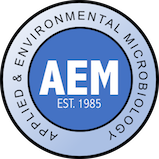

Our research group investigated Salmonella typhimurium flagellin monomer, FliC, as a scalable, rapidly produced recombinant TLR5-activating vaccine platform. We have previously shown over-expression in E. coli using minimal media, producing half a million equivalent doses per fermentation run, while meeting FDA standards for endotoxin levels. FliC affects host immune response by activating TLR5, allowing vaccine design strategies to modify reactogenicity and immunogenicity of associated antigens.
Research Spotlight – Previous Projects

Schematic representation of selected FliC-RSVG and FliC-RSVF fusion constructs. Schematic diagram of three Synthetic FliC-RSVG (residues 130 -230 – shown in red) constructs: cloned into NcoI and SpeI sites (RSVGN) and hypervariable region between NdeI and MfeI (RSVGAdd) and replacing 216 bp of D3 synthetic between AvrII and SacI (RSVGReplace). Schematic representation of two Synthetic FliC-RSVF antigenic site II constructs: palivizumab-binding antigenic site II (residues 255 – 278 – shown in green) cloned into SphI and BglII sites with nine native RSVF residues flanking (shown in pink) to act as a linker piece between epitope insert and Synthetic FliC (Pali2) and two residues on the N-terminal insert.
Respiratory Syncytial Virus (FliC-RSV)
There are several major challenges to RSV vaccine design and production: high reactogenicity, low immunogenicity, and low production yields. Early clinical trials using formalin-inactivated RSV (FI-RSV) failed to induce protection, and resulted in vaccine-enhanced disease and death in infants. RSV is also weakly immunogenic and natural infection fails to produce long-term adaptive immunity, allowing seasonal reinfection.
The challenges associated with RSV vaccine design make it the perfect candidate for use with the Synthetic FliC platform we’ve developed. Two targets for RSV vaccine design were used to evaluate Synthetic FliC platform in silico and in vitro for stability and production: RSV Glycoprotein (RSVG) and RSV Fusion (RSVF) protein antigenic site II. RSV Fusion protein (RSVF) is a major target for RSV vaccine design, particularly the palivizumab-binding RSVF antigenic site II. Production of high-yield recombinant RSVF protein is a challenge for RSV vaccine design and has been largely unsuccessful because of a failure to achieve proper RSV F conformation in high yield. RSVF antigenic site II must have a specific conformation for palivizumab antibody binding and previous groups have modeled and designed this epitope onto a scaffold to achieve antibody response.
In cooperation with Professor Kang of Georgia State University’s Institute for Biomedical Sciences, we have designed a series of Synthetic FliC-RSV constructs using RSVG (aa 130-230) and RSVF antigenic site II epitope and screened in silico with Synthetic FliC platform for exposure and conformation using 3D homology modeling software I-TASSER. Putative constructs were expressed in E. coli, purified, and evaluated in vitro by ELISA and TLR5 tissue culture bioassay.

SDS-PAGE & Western Blot on FliC-Stx2B FPLC purified protein. (A) Lanes 1 & 9) Protein Marker. Lane 2) 1-hour refolded FliC-Stx2B purified protein loaded with 5ug. Lane 4) 1-hour refolded FliC-Stx2B purified protein loaded with 10ug. Lane 6) 6-hour refolded FliC-Stx2B loaded with 10ug. (B) All lanes correspond to (A).
FliC-Stx2B
Currently, there is no approved vaccine for Shigellosis and the Shiga-like toxin 2, when genetically modified to make the toxoid, is poorly immunogenic. We have approached this problem by taking the subunit B of shiga-like toxin 2, an Escherichia coli O:157 verocytotoxin, and co-expressed it as a fusion protein with FliC for antigen specific presentation.
FliC-Stx2B amplicon DNA was attached to the C-terminus of the Synthetic FliC construct. In addition, the associated Stx2B signal peptide motif was excised prior to creating the fusion protein. For laboratory testing and characterization, a hexa-histidine affinity tag was incorporated downstream of the fusion protein. Purification of the resolubilized pellet protein was conducted using column affinity mediated through an AKTA® FPLC. Constructs expressing the FliC-Stx2B fusion protein bands were confirmed using Western blot & Indirect-ELISA analysis of the purified fusion protein.
During protein over expression, FliC-Stx2B is found in insoluble fractions. Non-desired proteins were removed from the induced insoluble cell pellet fractions during resolubilization, while also isolating FliC-Stx2B. The reduction in non-desired protein simplifies the purification process further with inclusion of a hexa-histidine tag into the construct, allowing for precise binding.
Purification of FliC-Stx2B maintained fusion protein retention when comparing resolubilized samples against purified samples while also yielding >97% purity on SDS-PAGE. Binding of anti-Stx2B mAbs, seen in both Western blot and indirect-ELISA assay, confirms that FliC-Stx2B biological activity is maintained following resolubilization & purification amongst varying refolded and purified samples. Activity against flagellar TLR5 receptors also show competitive Innate cell activation profiles, similar to that of commercially available products.

The previous AEM Vaccine Group
Recombinant Native FliC Production
Native Salmonella typhimurium flagellin monomer FliC was being produced at commercial scale for research applications.
Expression of Synthetic FliC in Pichia pastoris
Our lab investigated the development of a recombinant protein vaccine by using Pichia pastoris (P. pastoris) as an expression system for the flagellin protein FliC.
Ebola/Marburg
A 15mer Marburg oligopeptide was added to the C-terminal of Salmonella typhimurium FliC, over expressed in bioreactor, purified, and evaluated in vitro for bioactivity.
Seasonal flu
Worked with industrial client, propagated and purified a recombinant seasonal flu-flagellin construct in bioreactor, purified, and evaluated in vitro for bioactivity.
